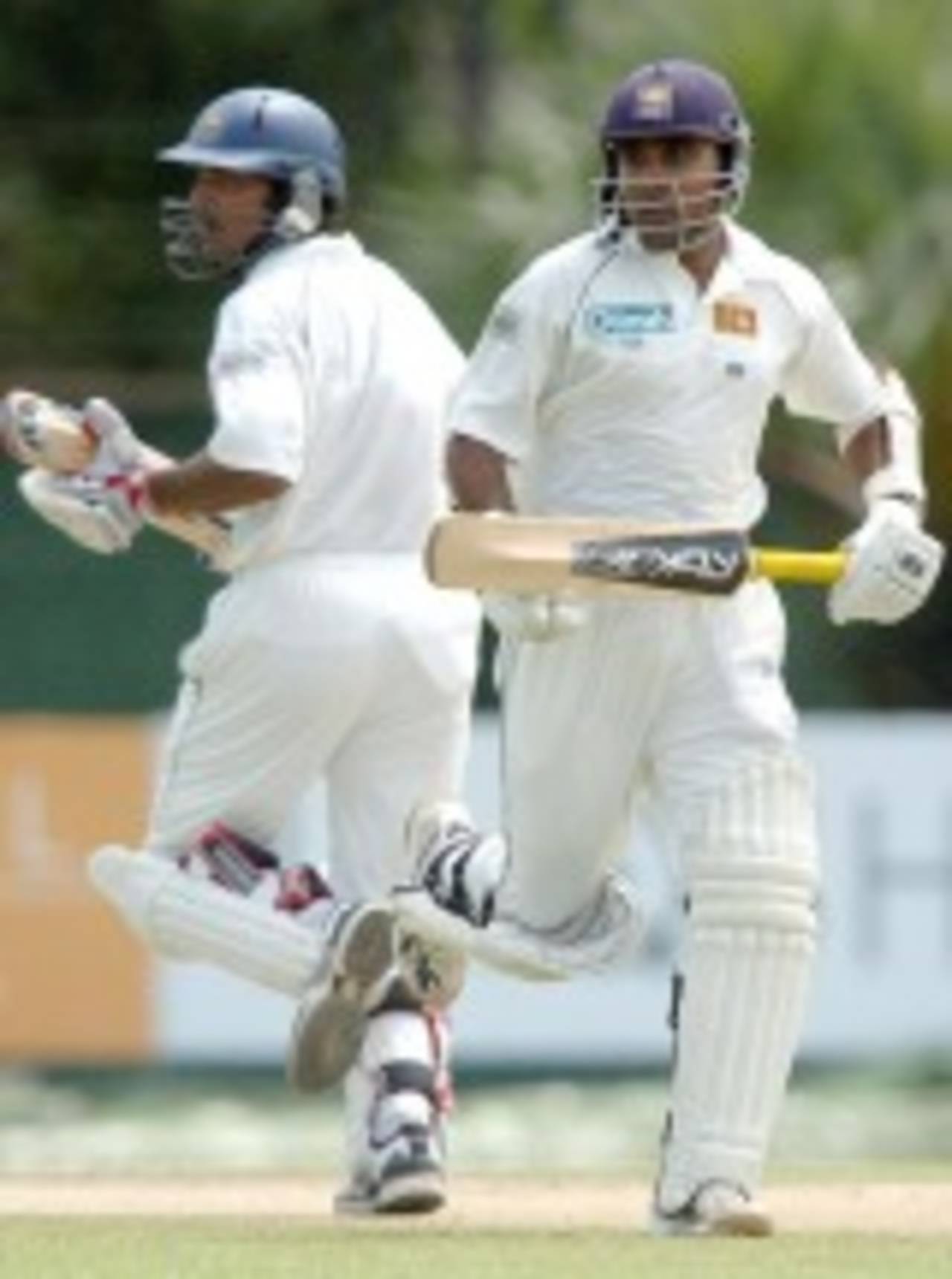One huge partnership, and nothing else
All of us are familiar with the exploits of one batsman in a single innings

AFP
All of us are familiar with the exploits of one batsman in a single innings. This list is led by Charles Bannerman who scored an unbeaten 165 out of 245 in the first ever Test innings played. This value of 67.3% has remained unsurpassed during all these 130 years. Slater came close with 66.8% and Laxman's Sydney masterpiece clocked in at 64.0%. It is not an easy task to score over two-thirds of the team total as proved by the longevity of Bannerman's achievement.
I started thinking about this type of a dominance, but from a partnership point of view. I wondered about single dominating partnerships, and very little else. The possibilities are fascinating. A huge partnership and very little else means that there exist(s) one or more huge batting collapses.
If this partnership was for an early wicket, there had to be an immediate batting collapse afterwards. If this was for one of the middle wickets, there have been batting slumps either side of the partnership. However, if there was a big partnership for a late wicket such as ninth, the batting team was looking at a huge disaster and possibly recovered.
With this background, let us look at the table. The only criteria I have considered is that a team has to be all out. This is the only way to ensure that the stated objective is met correctly. Otherwise India's score of 410 for 1, consisting of an opening partnership of 410 will, incorrectly, qualify. Similarly Amla's and Kallis' partnership of 330 out of a South African score of 422 for 3 will, mistakenly, qualify. Just two examples to illustrate the idea.
The excellent partnership between Strauss and Collingwood at Chennai, although not enough to prevent a great win by India, had a high 68.8% share of the team score. However this could not be considered since Pietersen declared the England innings. On the other hand, the dominating partnership of Gambhir and Dravid at Mohali would have made the cut in the appropriate table with a % of team total figure of 69.3.
Table of high % partnerships
No Year Test I For Oth Ptshp (Wicket) Tot %
Sri Lanka lost the first 2 wickets for 2 runs. Then Sangakkara and Jayawardene added 168 and took them to 170 for 2. From this position they lost 8 wickets for 46 runs.
Similar story in the third entry. England slips to 15 for 3, then 199 gets added and then 7 wickets for 45 runs. All these three follow the same pattern.
Let us look at the seventh entry. Griffith and Campbell added 276 for the first wicket. Then all 10 wickets were lost for 89 runs. But the story does not end there.
From 276 for no loss West Indies lost their next 40 wickets for 599 runs and lost the series 0-2. Lara gave up the captaincy.
The ninth entry is interesting. Pakistan, 234 behind, collapsed to 65 for 8. Then Asif Iqbal and Intikhab Alam added a record 190 runs for the ninth wicket and avoided an innings defeat. Asif Iqbal's 146 was a wondeful essay of defiance.
The other partnerships which exceed 70% of the team total are shown below.
11.1927 0068 2 ENG vs Saf 230 for Second wkt (313-73.5%) 12.1946 0277 2 IND vs Eng 124 for First wkt (170-72.9%) 13.1999 1472 2 AUS vs Pak 327 for Fifth wkt (451-72.5%) 14.1993 1240 4 ZIM vs Pak 135 for Second wkt (187-72.2%) 15.1933 0230 3 IND vs Eng 186 for Third wkt (258-72.1%) 16.2001 1551 3 ZIM vs Win 164 for First wkt (228-71.9%) 17.1997 1391 2 PAK vs Win 298 for First wkt (417-71.5%) 18.2000 1494 1 PAK vs Win 206 for Sixth wkt (288-71.5%) 19.1980 0875 1 WIN vs Nzl 162 for Fourth wkt (228-71.1%) 20.1912 0129 4 AUS vs Eng 46 for Second wkt ( 65-70.8%) 21.2005 1774 3 ENG vs Pak 175 for Third wkt (248-70.6%) 22.1960 0497 1 PAK vs Ind 246 for Second wkt (350-70.3%) 23.1907 0093 2 SAF vs Eng 98 for Fourth wkt (140-70.0%)A footnote to the previous article on Australia:
South Africa let go many opportunities during the Perth Test. However they took advantage of the last one offered in a decisive manner and this wonderful win by South Africa, against all odds, has clearly proved that Australia have genuinely lost their edge. This is not just a passing phase. Not that they would drop down like West Indies in the 90s. They would still be one of the 3/4 teams which compete for the top spot.
India's tactics on the fourth and fifth days at Mohali were disappointing. Unfortunately individual records again took priority over team requirements. A very aggressive captain would have declared at the start of play on the fifth day. A positive captain would have declared at 175 for 4. Unfortunately, at least during this test, Dhoni has shown to be neither.
Before anyone pounces on me, please read further. The way India played in this Test is perfect for a team aspiring for the second position but not sufficient if India is aiming to unseat Australia from the top position. All efforts should have been made for a 2-0 result, even accepting a 5% possibility of a 1-1 result.
Please peruse this excellent Cricinfo article by S Aga, if you have not already done so.
Anantha Narayanan has written for ESPNcricinfo and CastrolCricket and worked with a number of companies on their cricket performance ratings-related systems